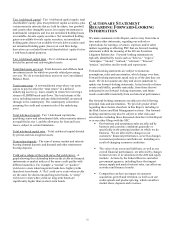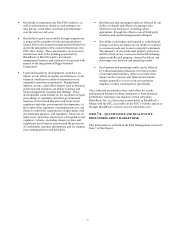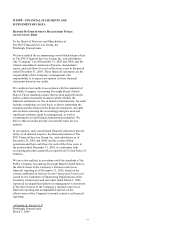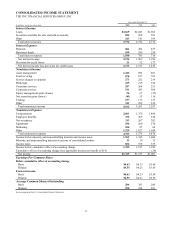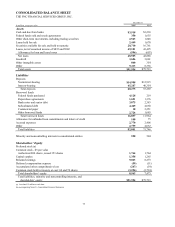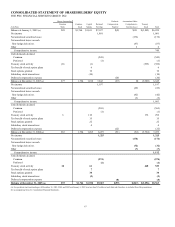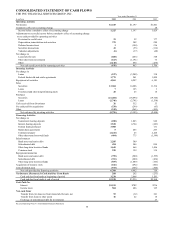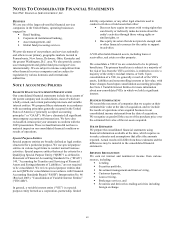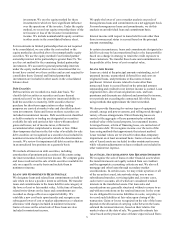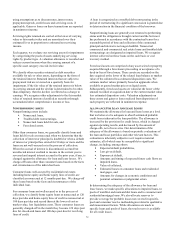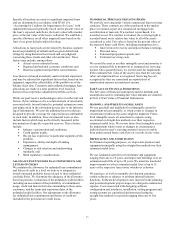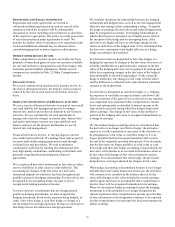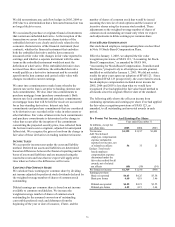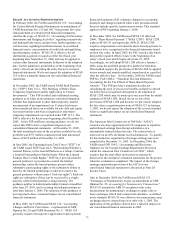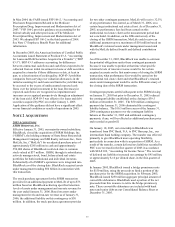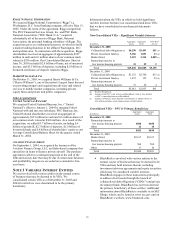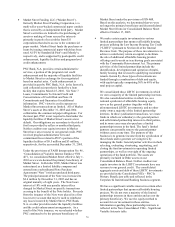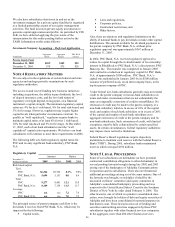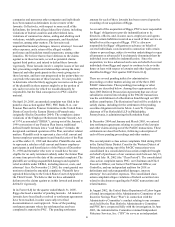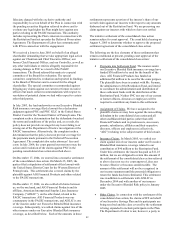PNC Bank 2005 Annual Report Download - page 72
Download and view the complete annual report
Please find page 72 of the 2005 PNC Bank annual report below. You can navigate through the pages in the report by either clicking on the pages listed below, or by using the keyword search tool below to find specific information within the annual report.72
using assumptions as to discount rates, interest rates,
prepayment speeds, credit losses and servicing costs, if
applicable. Gains or losses on these transactions are reported
in noninterest income.
Servicing rights retained are carried at the lower of carrying
value or fair market value and are amortized over their
estimated lives in proportion to estimated net servicing
income.
Each quarter, we evaluate our servicing assets for impairment
by categorizing the pools of assets underlying servicing
rights by product type. A valuation allowance is recorded and
reduces current income when the carrying amount of a
specific asset category exceeds its fair value.
We classify other securities retained as debt securities
available for sale or other assets, depending on the form of
the retained interest. Retained interests that are subject to
prepayment risk are reviewed on a quarterly basis for
impairment. If the fair value of the retained interest is below
its carrying amount and the decline is determined to be other-
than-temporary, then the decline is reflected as a charge to
earnings. We recognize other adjustments to the fair market
value of retained interests classified as securities through
accumulated other comprehensive income or loss.
NONPERFORMING ASSETS
Nonperforming assets include:
• Nonaccrual loans,
• Troubled debt restructurings,
• Nonaccrual loans held for sale, and
• Foreclosed assets.
Other than consumer loans, we generally classify loans and
loans held for sale as nonaccrual when we determine that the
collection of interest or principal is doubtful or when a default
of interest or principal has existed for 90 days or more and the
loans are not well-secured or in the process of collection.
When the accrual of interest is discontinued, accrued but
uncollected interest credited to income in the current year is
reversed and unpaid interest accrued in the prior year, if any, is
charged against the allowance for loan and lease losses. We
charge-off loans other than consumer loans based on the facts
and circumstances of the individual loan.
Consumer loans well-secured by residential real estate,
including home equity and home equity lines of credit, are
classified as nonaccrual at 12 months past due. We charge-off
these loans based on the facts and circumstances of the
individual loan.
For consumer loans not well-secured or in the process of
collection, we classify home equity loans as nonaccrual at 120
days past due and home equity lines of credit as nonaccrual at
180 days past due and record them at the lower of cost or
market value, less liquidation costs. These consumer loans are
generally charged-off in the month they become 120 days past
due for closed-end loans and 180 days past due for revolving
lines of credit.
A loan is categorized as a troubled debt restructuring in the
period of restructuring if a significant concession is granted due
to deterioration in the financial condition of the borrower.
Nonperforming loans are generally not returned to performing
status until the obligation is brought current and the borrower
has performed in accordance with the contractual terms for a
reasonable period of time and collection of the contractual
principal and interest is no longer doubtful. Nonaccrual
commercial and commercial real estate loans and troubled debt
restructurings are designated as impaired loans. We recognize
interest collected on these loans on the cash basis or cost
recovery method.
Foreclosed assets are comprised of any asset seized or property
acquired through a foreclosure proceeding or acceptance of a
deed-in-lieu of foreclosure. These assets are recorded on the
date acquired at the lower of the related loan balance or market
value of the collateral less estimated disposition costs. We
estimate market values primarily based on appraisals when
available or quoted market prices on liquid assets.
Subsequently, foreclosed assets are valued at the lower of the
amount recorded at acquisition date or the current market value
less estimated disposition costs. Valuation adjustments on
these assets and gains or losses realized from disposition of
such property are reflected in noninterest expense.
ALLOWANCE FOR LOAN AND LEASE LOSSES
We maintain the allowance for loan and lease losses at a level
that we believe to be adequate to absorb estimated probable
credit losses inherent in the loan portfolio. The allowance is
increased by the provision for credit losses, which is charged
against operating results, and decreased by the amount of
charge-offs, net of recoveries. Our determination of the
adequacy of the allowance is based on periodic evaluations of
the loan and lease portfolios and other relevant factors. This
evaluation is inherently subjective as it requires material
estimates, all of which may be susceptible to significant
change, including, among others:
• Expected default probabilities,
• Loss given default,
• Exposure at default,
• Amounts and timing of expected future cash flows on
impaired loans,
• Value of collateral,
• Estimated losses on consumer loans and residential
mortgages, and
• Amounts for changes in economic conditions and
potential estimation or judgmental errors.
In determining the adequacy of the allowance for loan and
lease losses, we make specific allocations to impaired loans, to
pools of watchlist and nonwatchlist loans and to consumer and
residential mortgage loans. We also allocate reserves to
provide coverage for probable losses not covered in specific,
pool and consumer reserve methodologies related to qualitative
and measurement factors. While allocations are made to
specific loans and pools of loans, the total reserve is available
for all credit losses.


